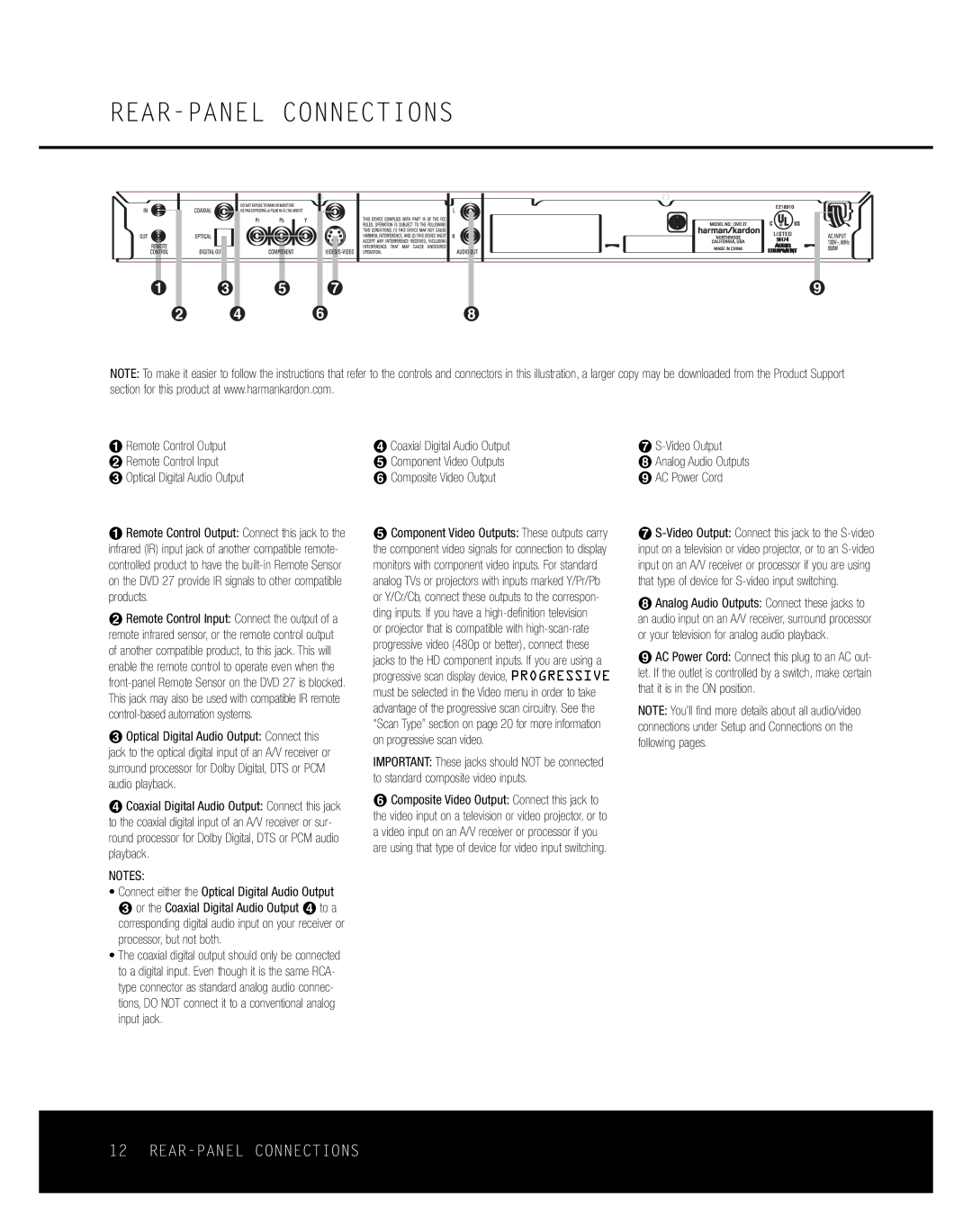
REAR-PANEL CONNECTIONS
0 | 2 | 4 | 6 | 8 |
1 | 3 |
| 5 | 7 |
NOTE: To make it easier to follow the instructions that refer to the controls and connectors in this illustration, a larger copy may be downloaded from the Product Support section for this product at www.harmankardon.com.
¡Remote Control Output ™ Remote Control Input
£ Optical Digital Audio Output
¡Remote Control Output: Connect this jack to the infrared (IR) input jack of another compatible remote- controlled product to have the
™Remote Control Input: Connect the output of a remote infrared sensor, or the remote control output of another compatible product, to this jack. This will enable the remote control to operate even when the
£Optical Digital Audio Output: Connect this jack to the optical digital input of an A/V receiver or surround processor for Dolby Digital, DTS or PCM audio playback.
¢Coaxial Digital Audio Output: Connect this jack to the coaxial digital input of an A/V receiver or sur- round processor for Dolby Digital, DTS or PCM audio playback.
NOTES:
•Connect either the Optical Digital Audio Output £ or the Coaxial Digital Audio Output ¢ to a corresponding digital audio input on your receiver or processor, but not both.
•The coaxial digital output should only be connected to a digital input. Even though it is the same RCA- type connector as standard analog audio connec- tions, DO NOT connect it to a conventional analog input jack.
¢Coaxial Digital Audio Output ∞ Component Video Outputs § Composite Video Output
∞Component Video Outputs: These outputs carry the component video signals for connection to display monitors with component video inputs. For standard analog TVs or projectors with inputs marked Y/Pr/Pb or Y/Cr/Cb, connect these outputs to the correspon- ding inputs. If you have a
or projector that is compatible with
IMPORTANT: These jacks should NOT be connected to standard composite video inputs.
§Composite Video Output: Connect this jack to the video input on a television or video projector, or to a video input on an A/V receiver or processor if you are using that type of device for video input switching.
¶S-Video Output
• Analog Audio Outputs ª AC Power Cord
¶
•Analog Audio Outputs: Connect these jacks to an audio input on an A/V receiver, surround processor or your television for analog audio playback.
ªAC Power Cord: Connect this plug to an AC out- let. If the outlet is controlled by a switch, make certain that it is in the ON position.
NOTE: You’ll find more details about all audio/video connections under Setup and Connections on the following pages.
